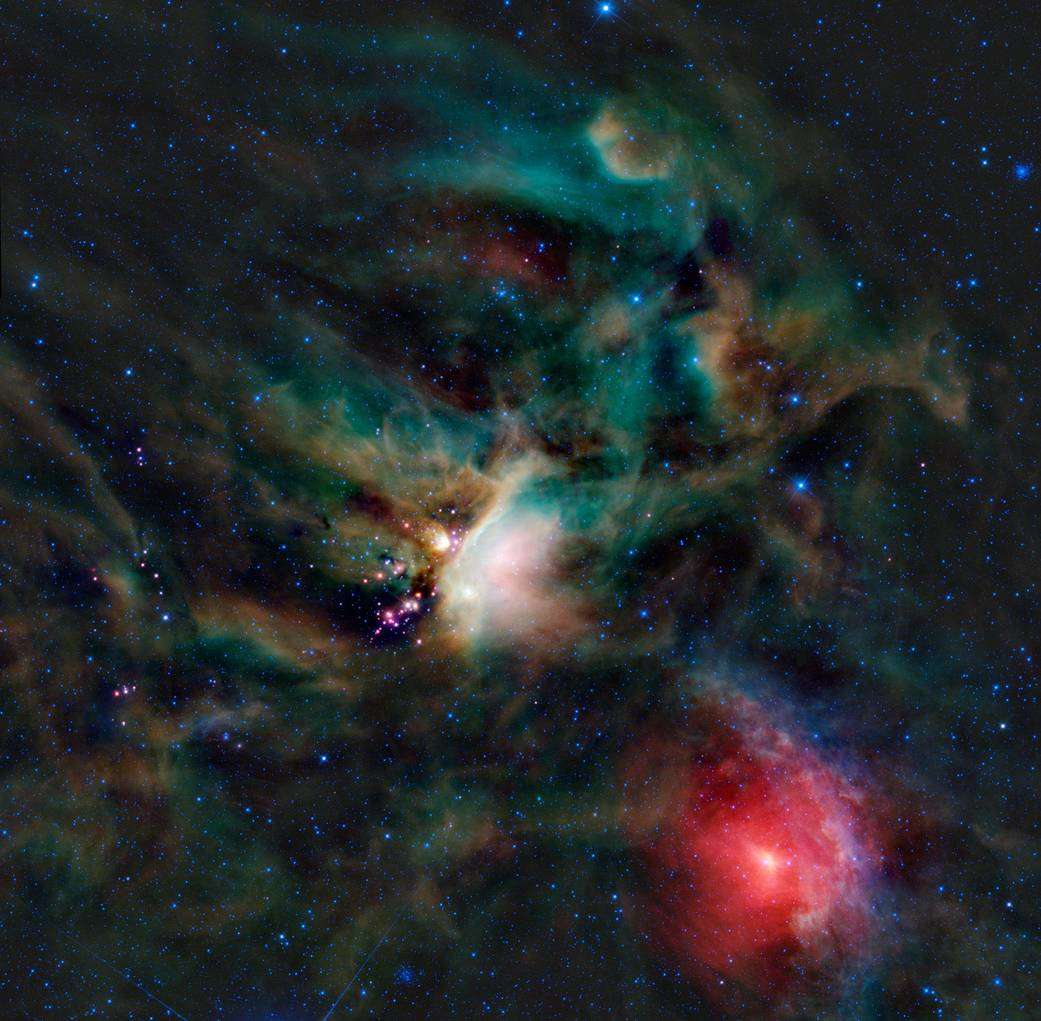Create a free profile to get unlimited access to exclusive videos, sweepstakes, and more!
What put all the radioactive stuff in our solar system? Dead, exploded stars

Glowing radioactive ooze isn’t exactly what you would expect to find in space, but gamma rays emitted by a rare aluminum isotope told astrophysicists they were definitely onto something.
Ophiucus is a constellation where there lurks a dense and turbulent cloud of nascent stars. This star-forming region has now revealed more proof that radioactive elements most likely first arrived in the solar system via nearby supernovae. It is the leftovers from those explosions, which were scattered with radionuclides, that are thought to have contaminated gas in the protoplanetary disc from which our Sun and planets and moons were born.
Radionuclides are radioactive forms of elements whose half-life is determined by the rate they emit radiation. While some end up as reactor waste, supernovae can be the most enormous nuclear reactors of all, as astrophysicist John Forbes of the Flatiron Institute’s Center for Computational Astrophysics realized when he found where they were probably coming from. He led a study recently published in Nature Astronomy.
“Isotopes like Aluminum-26 form as the result of nucleosynthesis in supernovae,” he tells SYFY WIRE. “The gamma ray observations were quite challenging. Al-26 is a rare isotope, and Ophiuchus is one of the only regions that we can make out as a distinct source of the gamma rays indicating the presence of Al-26.”
Nucleosynthesis is the process by which new atomic nuclei are created. It happened right after the Big Bang and keeps happening throughout the lives, and sometimes explosive deaths, of stars. Such energetic events have the power to either fuse the nuclei of more than one atom into a new element or isotope (nuclear fusion) or split the protons and neutrons in a nucleus (nuclear fission). Nuclear fusion explains many of the heavy elements that result from supernovae.
Aluminum-26 was nearly impossible to see even in regions where it was supposed to exist in high concentrations. The star cluster next to Ophiucus, Upper Sco, which has even more Al-26 than Ophiucus itself, is where Forbes and his team believe the substance originated in that part of the universe. It doesn’t help that gamma rays are emitted as it decays. The half-life of an isotope is how long it takes for half to degrade. Al-26 can only be detected when a nucleus in one of its atoms decays because that means you’d have to wait around 700,000 years.
At least for the researchers trying to see signs of this isotope, that time had already passed, which is why they were able to make out gamma ray signals. Ophiucus is one of the only known regions where gamma rays that are emitted can be traced to their source. Observing in different wavelengths also helped. Star-forming gas showed up in the near-infrared, while far-infrared and radio wavelengths made dust visible. Velocities of dense gases were also seen in radio, while the stars in Upper Sco and their distances could be observed in optical light.
“Multiwavelength observations were absolutely crucial because they allowed us to see gamma rays from the radioactive aluminum, as well as their surroundings,” Forbes says. “The near-IR in particular was extremely helpful because it can see through the dust in the Ophiuchus clouds, allowing us to see the cores and disks forming today.”
Infrared or near-infrared light has long wavelengths (too long for our eyes to handle) that can bend over or under dust particles, which is why it can make its way between them, unlike optical light. This is why these wavelengths are able to pierce through clouds of dust and see objects or emissions that would otherwise be obscured. A multiwavelength approach also made it possible to tell how Al-26 was flowing, and also that the isotope was present next to the enormous clouds in Ophiucus where embryonic stars were still in cosmic utero.
Forbes overlaid maps of the gamma rays and dust that were observed in different parts of the spectrum to achieve a visualization which showed where the gamma ray emissions were coming from. Previous observations and Gaia data gave a better idea of the flow of the gas in which there were particles of Al-26. Ophiucus is closer to Earth than Upper Sco, which is partly why the hot gas was already expected to be flowing into Ophiucus and towards our planet. Evidence of where carbon monoxide and ammonia in the region were going supported that.
There is something else particularly groundbreaking about this study. It is the first time anyone has quantified the likelihood of something in astronomy, with the chances of Al-26 being from a supernova at 59% while there is still a 59% chance it could have come from other sources, such as Wolf-Rayet stars, which lose mass rapidly. Some of that mass which included the radionuclide in question could have been swept over to Ophiucus. Forbes believes this could change how we see things out there in the future.
“We want to spark more interest in the effects of Al-26 on planet formation, simulations of how much is produced by different sources, the incorporation of gamma ray data in more multi-wavelength studies, and the processes by which Al-26 and other short-lived radionuclides mix with dense star-forming gas,” he says.
So if science fiction ever made you associate radioactive substances with aliens, nothing lives in Ophiucus, but you probably weren’t too far off.


























